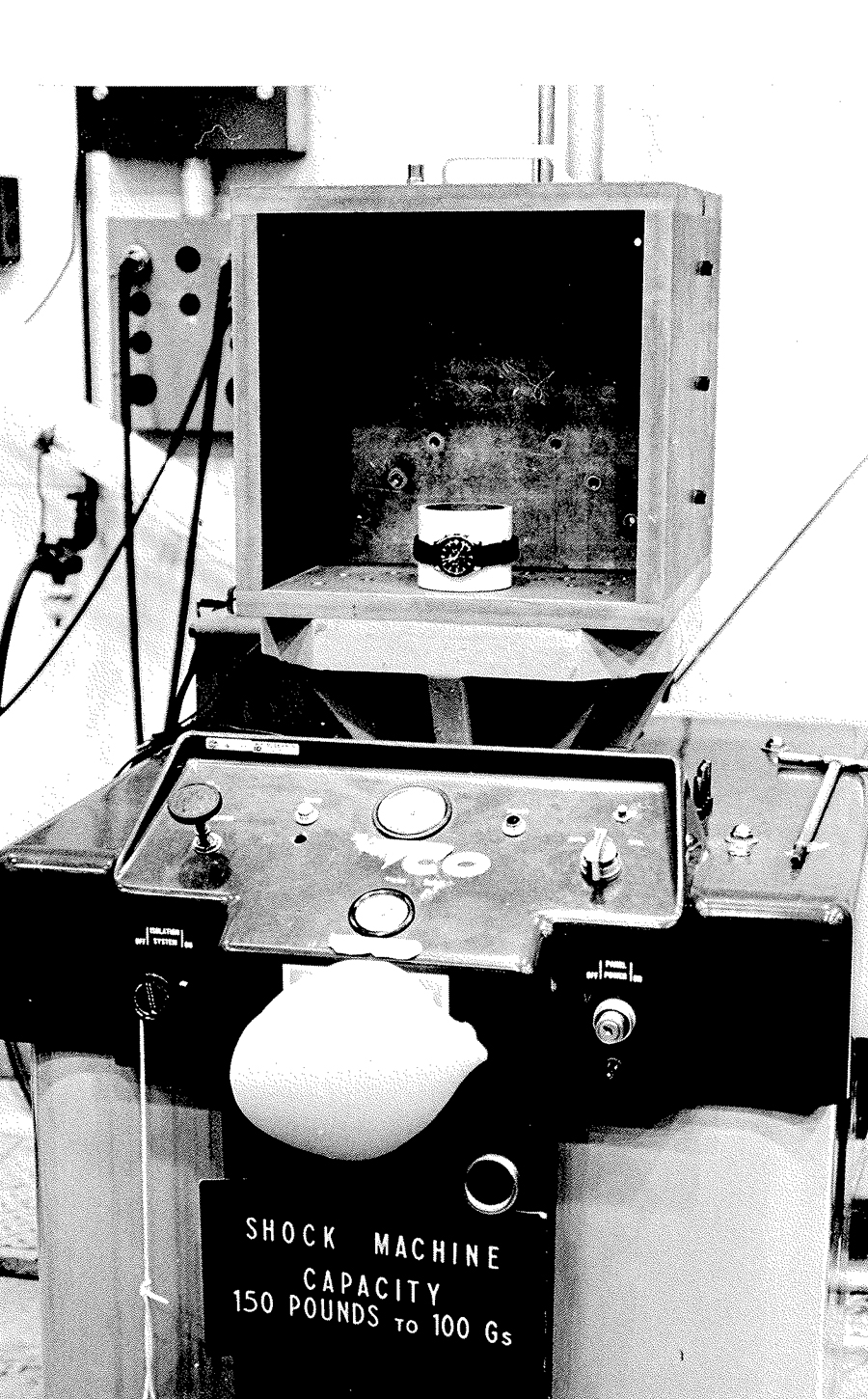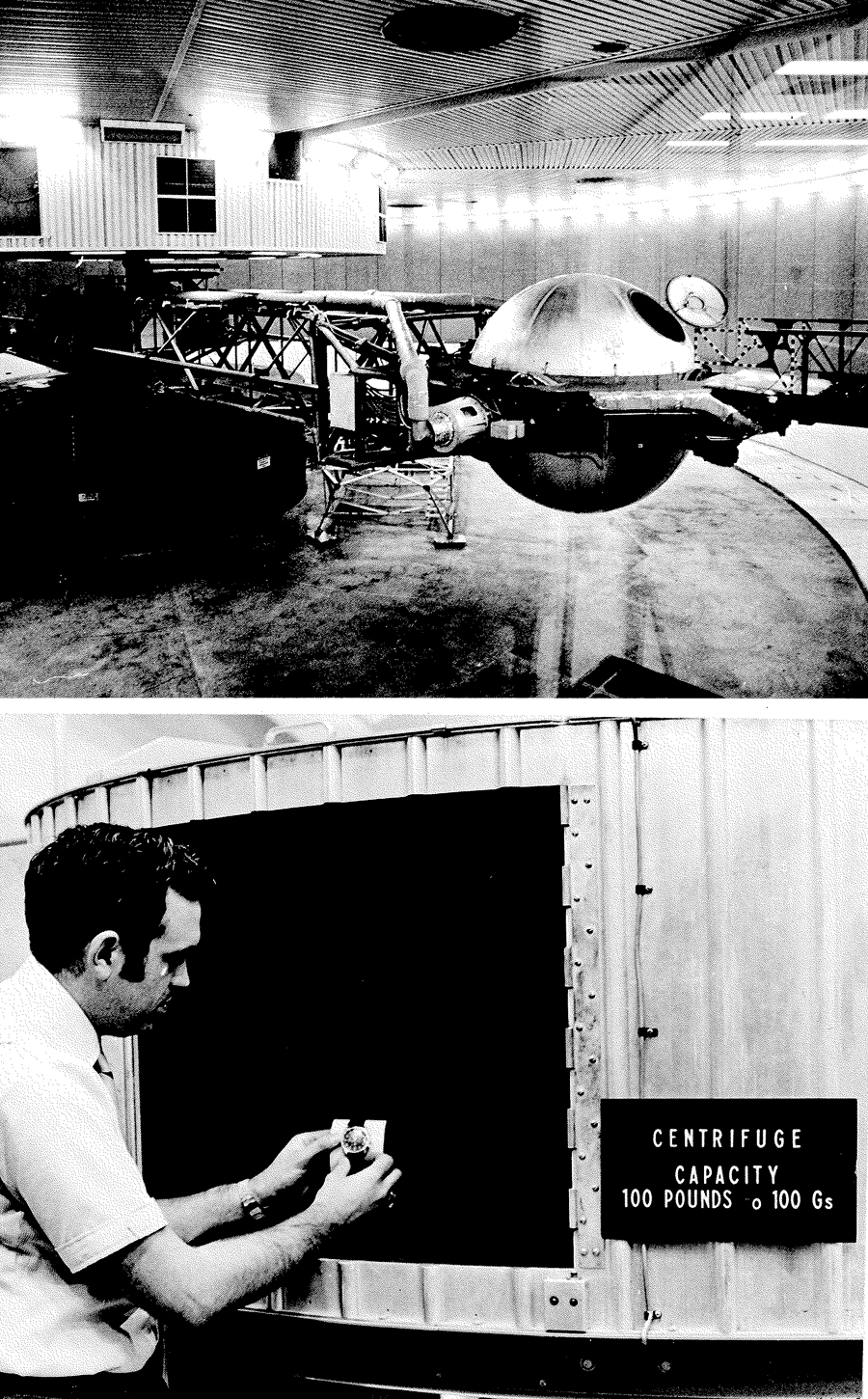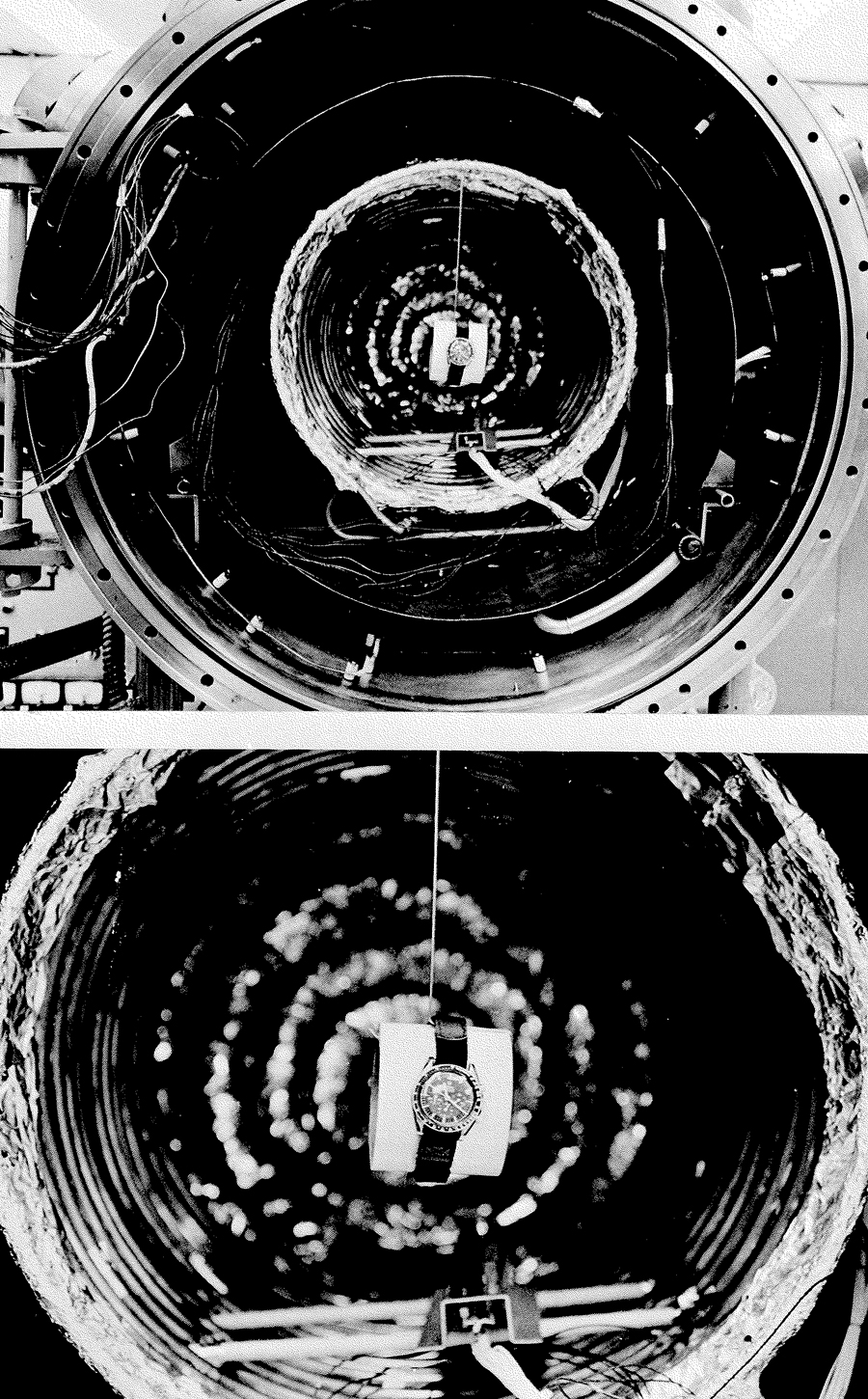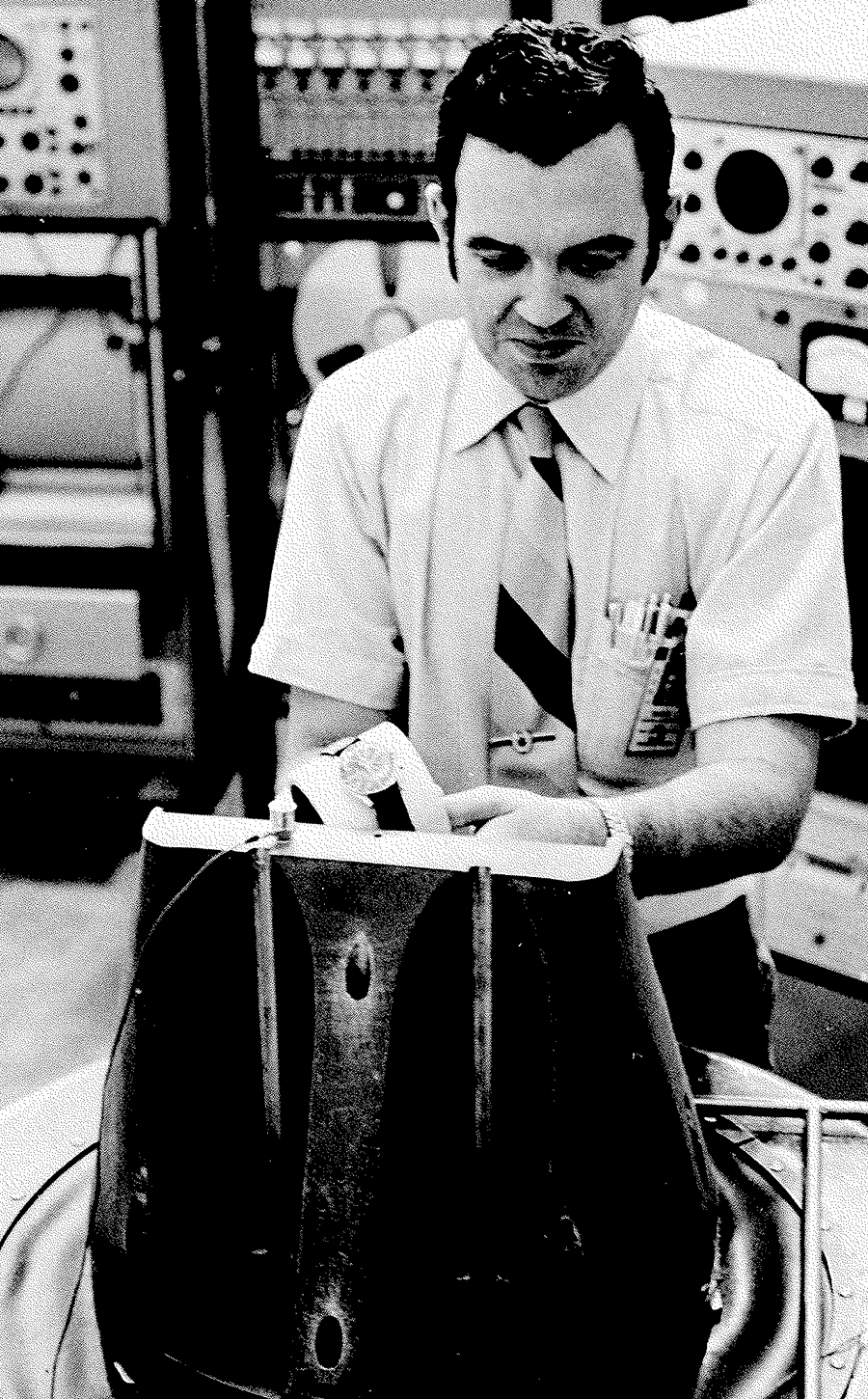Omega Speedmaster Moonwatch: 60 years of NASA certification
On March 1, 1965, NASA declared the Omega Speedmaster "the first watch approved for all manned space missions." Thus began the fantastic epic of a timepiece that would go down in history in more ways than one. Today, having become an icon of the watch brand and highly sought after by collectors, it continues to accompany astronauts on their space adventures. A lunar broadcast featuring the dashing astronaut Jean-François Clervoy: yes, yes, you read that right! A moment suspended in space-time.
The race for space exploration
In the context of the Cold War, the conquest of space was launched, notably with the arrival of a major event on the side of the Soviet Union. Indeed, on October 4, 1957, it launched the first satellite, “Sputnik”, and in 1961, propelled the first man into space: Yuri Gagarin. The United States was not left behind, and in 1962, the President of the United States, John F. Kennedy, gave a speech at Rice University to be marked “with a moon rock”: “We choose to go to the Moon”.

This is how the Americans took the lead in this space race by announcing the Mercury program, intended to send an astronaut into orbit, Gemini to carry out the ultra-delicate and precise maneuvers of docking as well as spacewalks, then Apollo to set foot on the ground of our satellite. It was by successfully completing this last mission in 1969 that NASA carried out the first lunar landing of a man… and of a watch that would become legendary.
A completely crazy call for tenders!
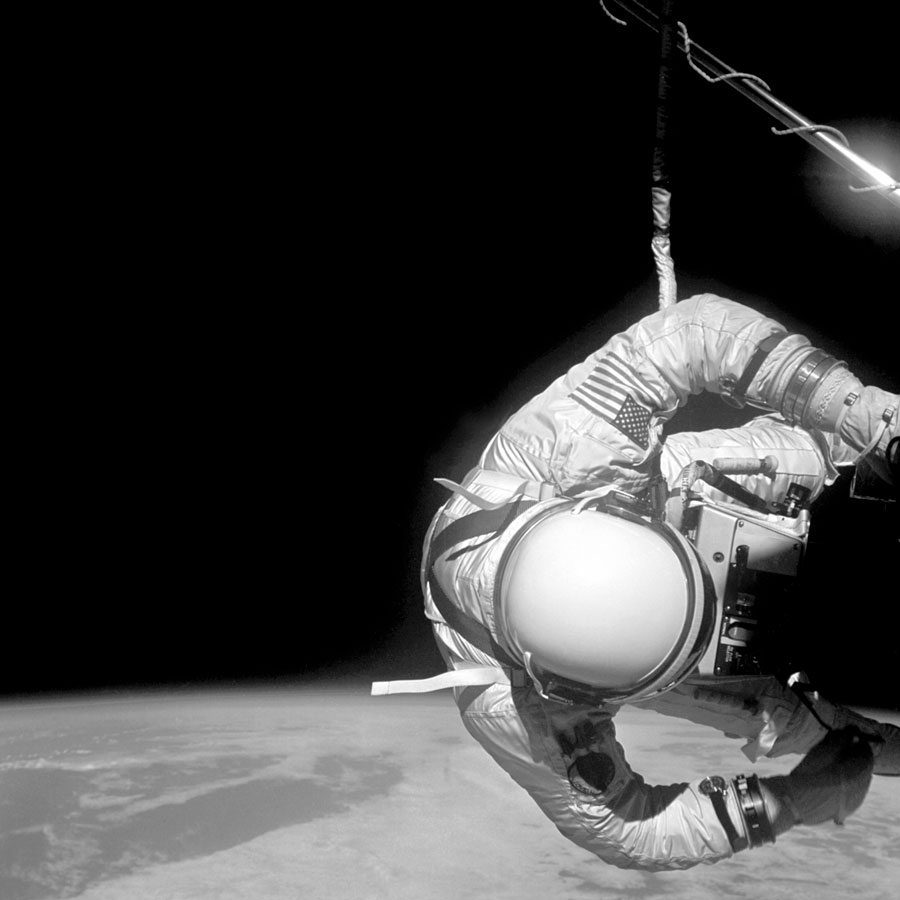
Project Mercury was the first American manned space program, made famous by the “Mercury Seven,” a group of daring and slightly crazy pilots (it must be admitted!). At the end of the program in 1963, NASA astronauts asked Deke Slayton, the director of operations, to provide them with a reliable watch for their future missions. At the same time, the American space agency was reevaluating its equipment in preparation for the Gemini and Apollo missions. In 1964, Deke Slayton therefore issued a call for tenders for “high-quality chronographs,” which he sent to several watch manufacturers around the world. Of all the brands contacted, only four responded, including Omega. Each company was invited to submit three chronographs with a bracelet, intended to undergo the most rigorous tests ever conducted.
Tested and approved by NASA
In the 1960s, Omega was one of four watch brands selected by NASA, which was looking for a watch capable of accompanying astronauts in all situations.
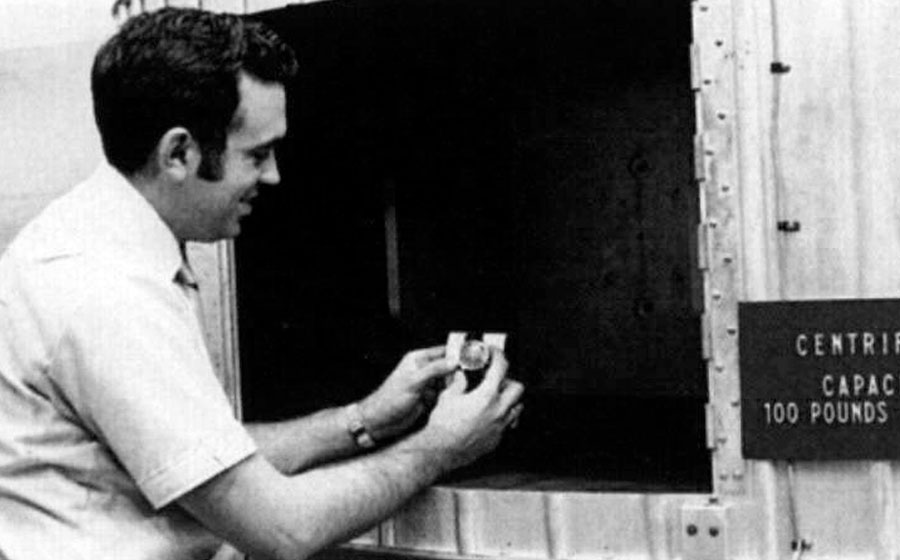
Indeed, the watch, as an emergency device, is an essential tool for astronauts if communication with Earth is interrupted. It will allow them to calculate the duration of their mission if the chronometric devices no longer respond. The specifications are as follows: the chronographs must be tested in different environments and emerge unscathed.
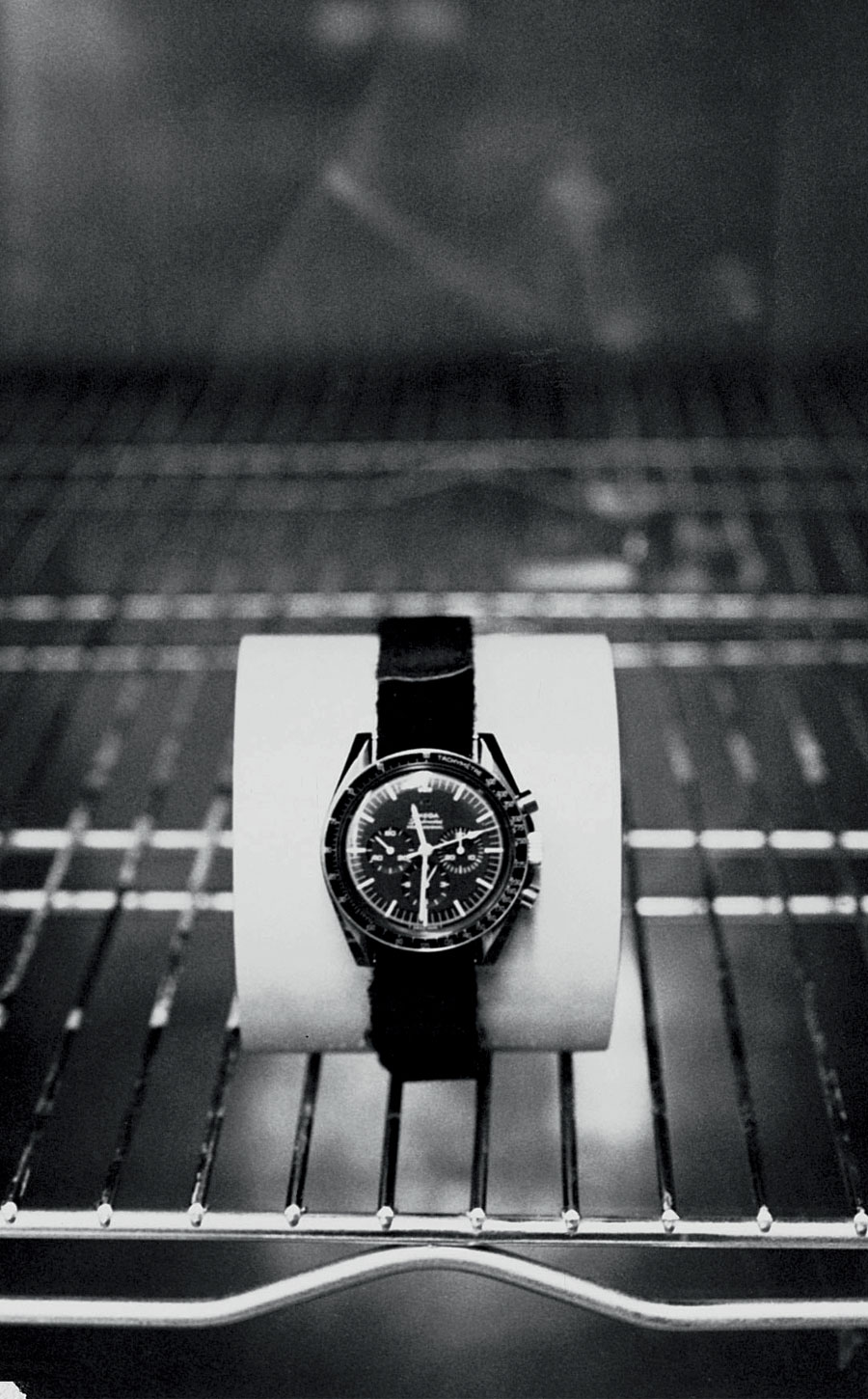
ALL TESTS IN DETAIL:
1 – High Temperature Test
After enduring 48 hours at 70° C, the watches
then faced 30 minutes at 93° in a partial vacu-
um. It was at this stage, in the thermal vacuum,
that the watches from two other brands failed.
The Omega Speedmaster was the only watch still surviving.
2 – Low temperature Test
The watch spent 4 hours in an environment of -18° C.
3 – Vacuum Test
The watch was heated in a vacuum chamber and
then immediately cooled to -18° C for several cycles.
4 – Humidity Test
An environment of 95% humidity was created with
temperatures ranging from 25° C to 70° C. The
watch was required to survive it during ten 24-hour cycles.
5 – Corrosion Test
The watch faced 48 hours in an atmosphere of oxygen at 70° C.
6 – Shock-Resistance Tests
Replicating the severity of space travel, the watch
faced six 40 G shocks in six different directions.
7 – Acceleration Test
The watch endured a progressive acceleration to
7.25 G for about five minutes and then to 16 G for 30 seconds in three axes.
8 – Low Pressure Test
The watch was subjected to a pressure of 10-6 atmospheres at 70° C for 90 minutes, then at 93° C for 30 minutes.
9 – High Pressure Test
The watch was subjected to an air pressure of 1.6 atmospheres for 60 minutes.
10 – Vibration Test
To simulate the extremes of a spacecraft launch,
the watch faced random vibrations in three axes
between 5 and 2,000 Hz with an acceleration of 8.8 G.
11 – Sound Test
To ensure reliability against noise, the watch was subjected to 130 decibels at frequencies from 40 to 10,000 Hz for 30 minutes.
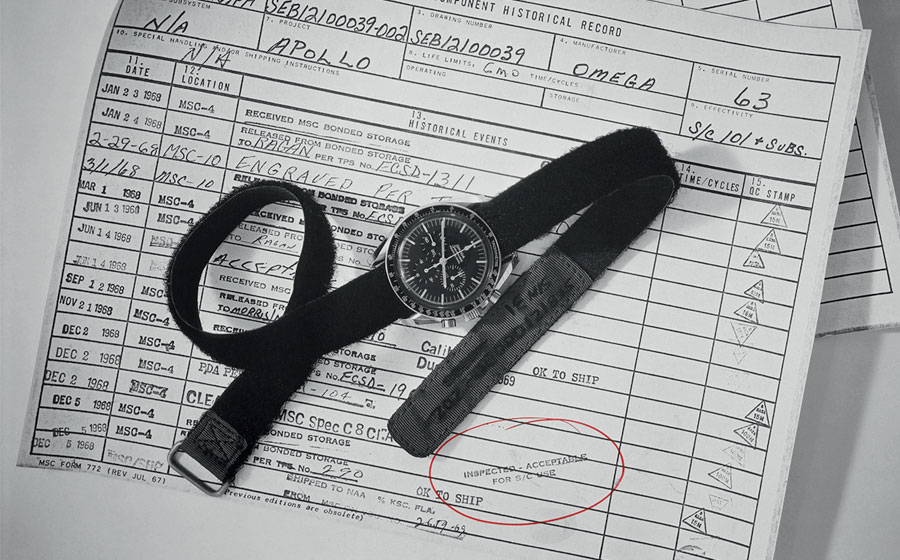
If they fail even one test, they are eliminated again. Resistance to heat, cold, shock, compression, decompression, the tests are demanding and rigorous. After a final test with astronauts, only one model successfully passes all the tests and becomes – on March 1, 1965 – the official watch for all NASA space missions and extravehicular activities: the Omega Speedmaster.
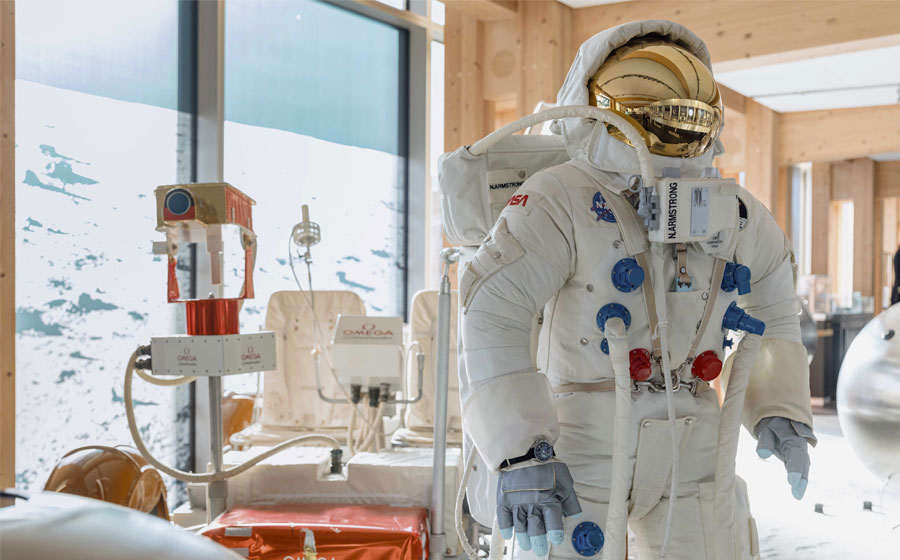
The “Moonwatch”, a survival tool
It was with the Gemini IV mission, launched on June 3, 1965, that the model achieved its first success during a spacewalk by Edward White who, accompanied by James McDivitt, completed a flight lasting 4 days and 62 orbits. The Speedmaster entered history forever on July 21, 1969, accompanying the astronauts during the Apollo 11 mission for Man’s first steps on the Moon. Not the one worn by Neil Armstrong who forgot it in the capsule, but that of Buzz Aldrin.
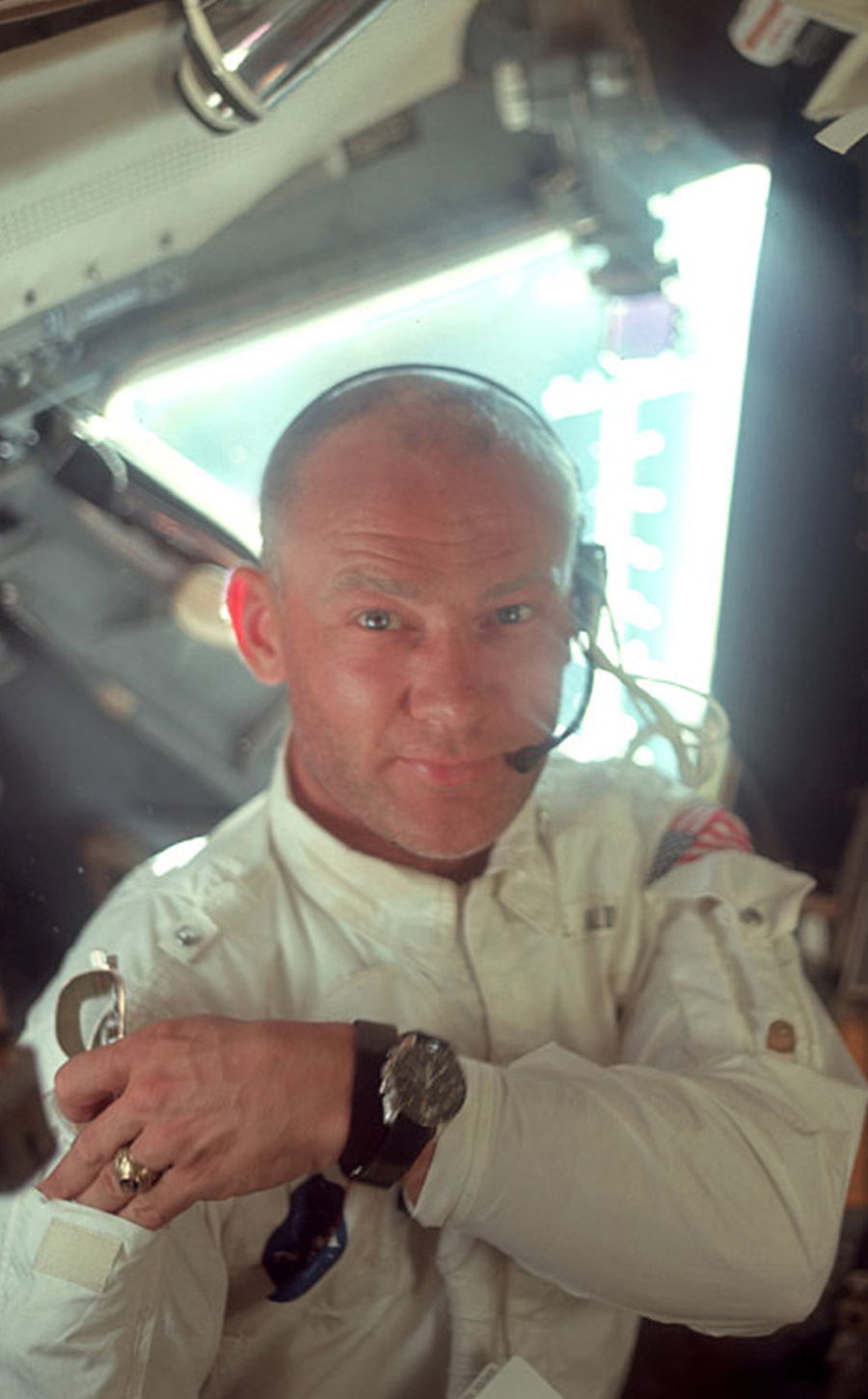
It was then renamed the “Moonwatch.” But it was with the Apollo 13 mission that it received all the honors when its chronometer function helped save the astronauts. Thanks to their Speedmaster watches, they orchestrated with extreme precision the ignition and the duration of the rocket engines, a decisive maneuver to ensure the emergency return of their escape capsule.
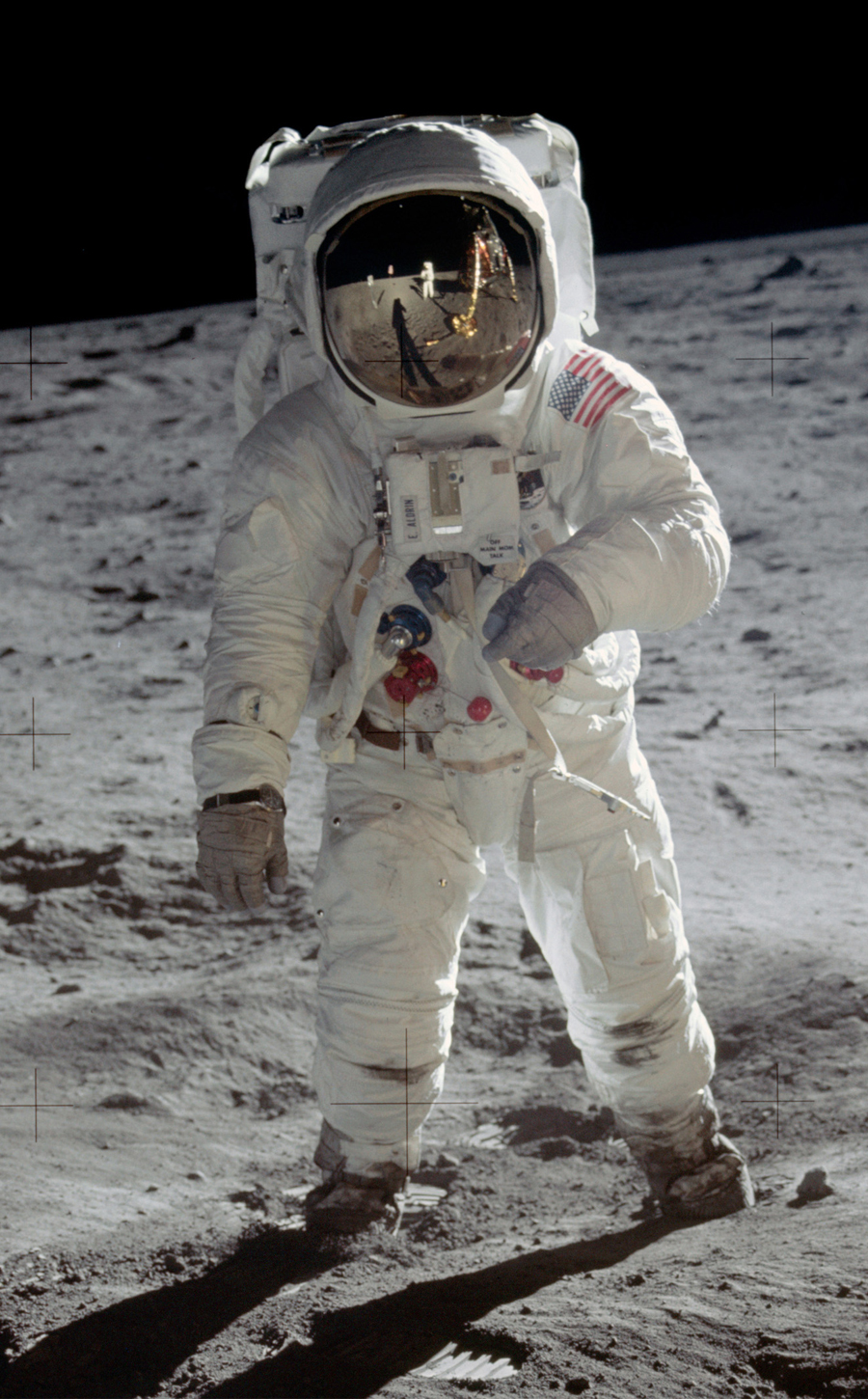
In recognition of this crucial role, Omega was awarded the prestigious Snoopy Award, the highest honor bestowed by NASA astronauts upon their top suppliers. NASA still uses Omega watches today.

The “Speedmaster Moonwatch Professional”, a dedicated collection
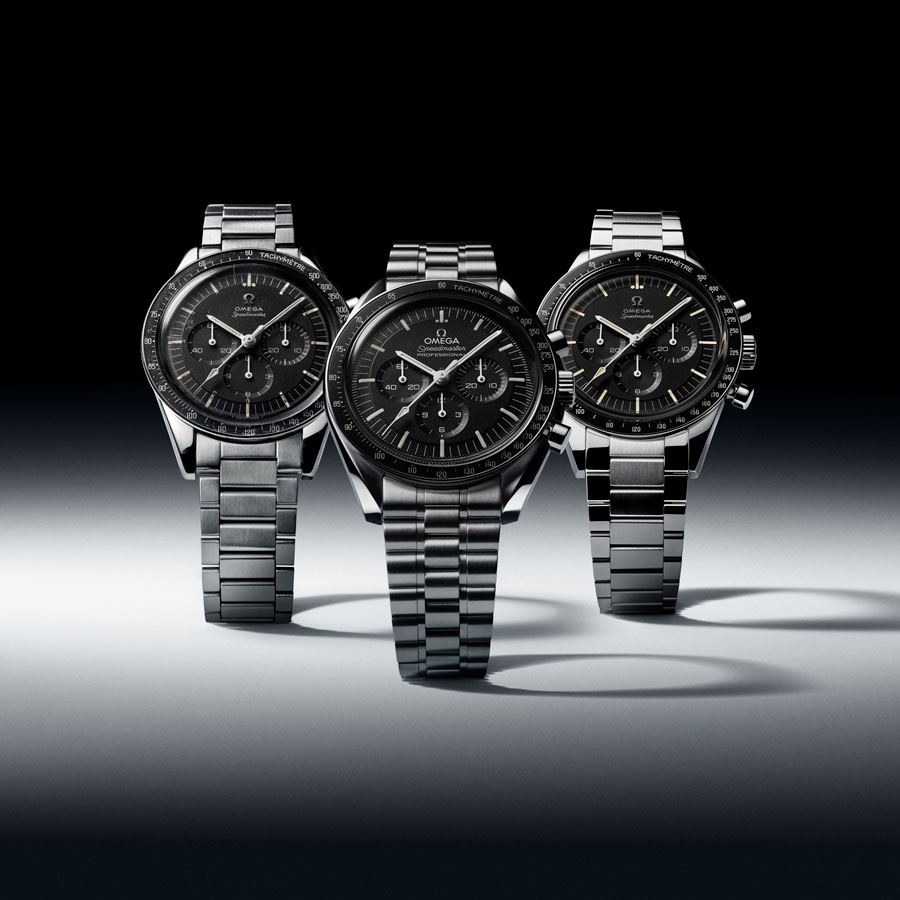
Watch tested by NASA (ref: ST 105.003)
Speedmaster Moonwatch (Réf : 310.30.42.50.01.001)
Speedmaster Calibre 321 (Réf : 311.30.40.30.01.001)
Referenced ST 105.003, the watch tested by NASA represents the third generation of Speedmaster. With a diameter of 39.7 mm, this instrument gave rise to the idea for a model released in 2020, the Speedmaster Calibre 321, which takes up the original style. Launched in 2021, the latest version of the Speedmaster Moonwatch Professional is inspired by the fourth generation that NASA astronauts wore on the Moon. Today, this collection is available in several variations with a wide choice of calibers, materials, and dial colors.
View the Speedmaster 321 technical specifications – €16,900
View the Speedmaster Moonwatch Professional technical specifications – €7,600
View all our Omega Speedmaster watch specifications and our articles dedicated to the Speedmaster.
To infinity and beyond, with the Speedmaster Skywalker X-33
Specially designed for astronauts and pilots, the Speedmaster Skywalker X-33 watch has been tested by the European Space Agency (ESA), of which Omega is a partner. The agency has approved its participation in all of its space missions.
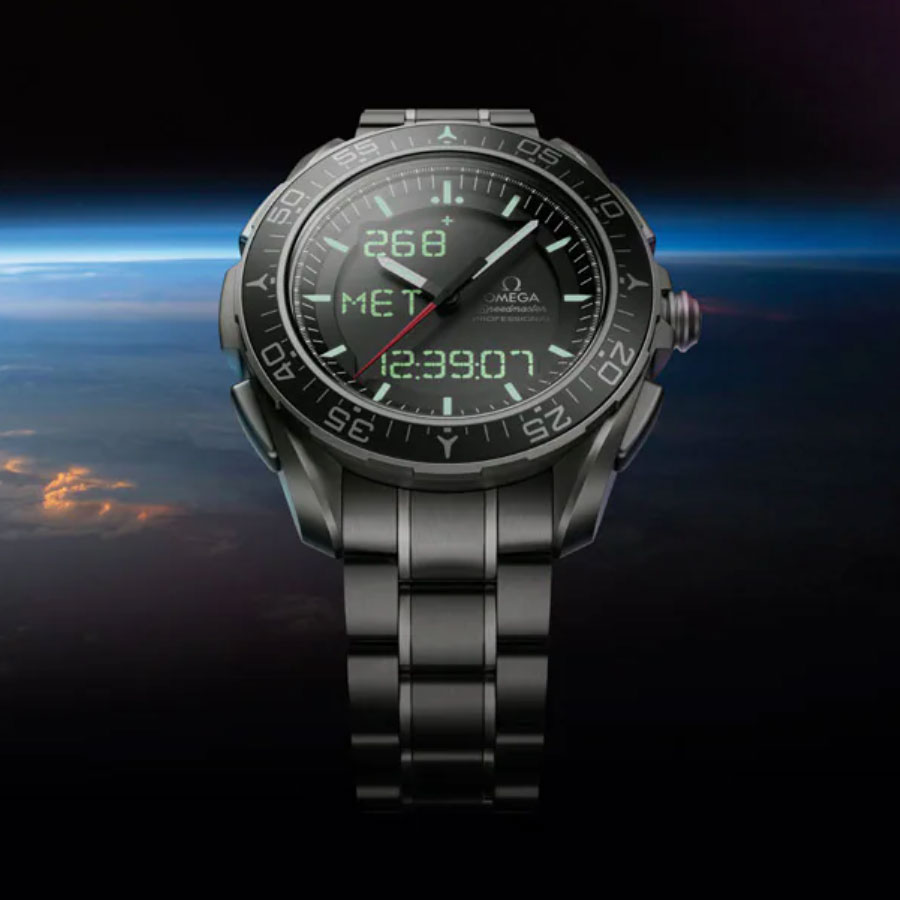
A reinterpretation of a model unveiled in 1998, this 45 mm diameter version is machined from grade 2 titanium with a slightly satin-finished effect. The case is enhanced by a ceramic bezel fitted with a 60-minute scale in chromium nitride. Punctuated with white indexes, the black dial is also overlooked by hour and minute hands coated with green luminescent Super-LumiNova. This optimal readability is accentuated by the fact that the red second hand stands out from the rest. These hands can be disengaged to facilitate access to the information on the digital screen.

This one provides the time in three time zones and also features three alarms, chronograph and countdown functions, as well as a perpetual calendar. In addition, the astronaut can view the elapsed time of the mission — MET (Mission Elapsed Time) — and the different phases — PET (Phase Elapsed Time). Water-resistant to 300 meters, this futuristic piece is powered by a multifunction quartz chronograph movement (battery life: 24 months). Equipped with a thermally compensated integrated circuit, this ultra-innovative movement was developed under an ESA patent license based on the work of ESA astronaut Jean-François Clervoy. The circle is complete.

View the technical details of the Speedmaster Skywalker X-33 – €6,400
…the Speedmaster X-33 Martimer
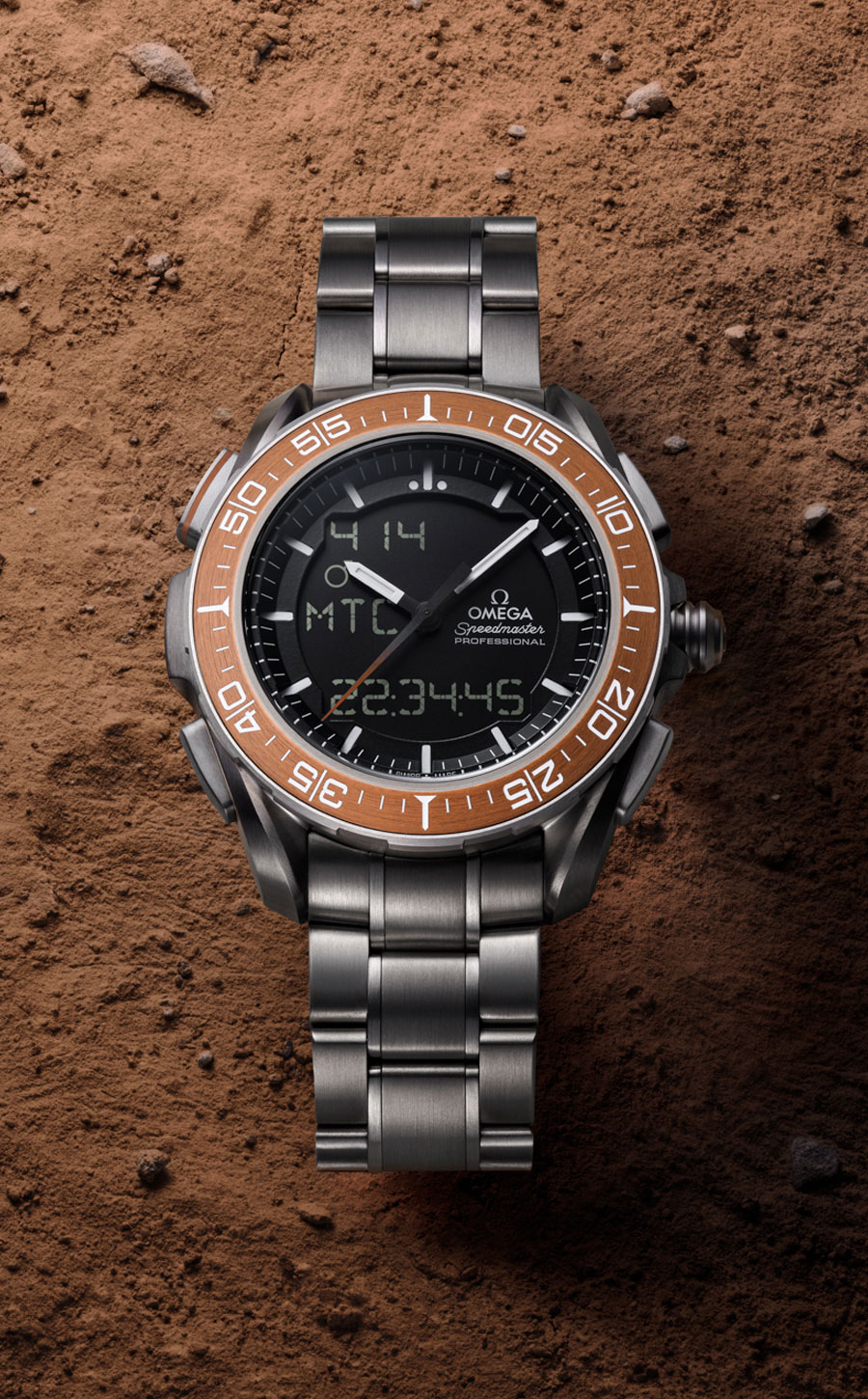
“Further, higher and higher” could be Omega’s motto when it comes to exploring the far reaches of the universe. Featuring the same technical and aesthetic features as its sister model, the Skywalker X-33, the Speedmaster X-33 Marstimer is distinguished by its MTC function, which tracks the date and time from the surface of Mars to the prime meridian. That is to say, a day on Mars is 39 minutes longer than on Earth. Crazy!!! It is also equipped with an innovative solar compass, to find true north on both the blue and red planets.
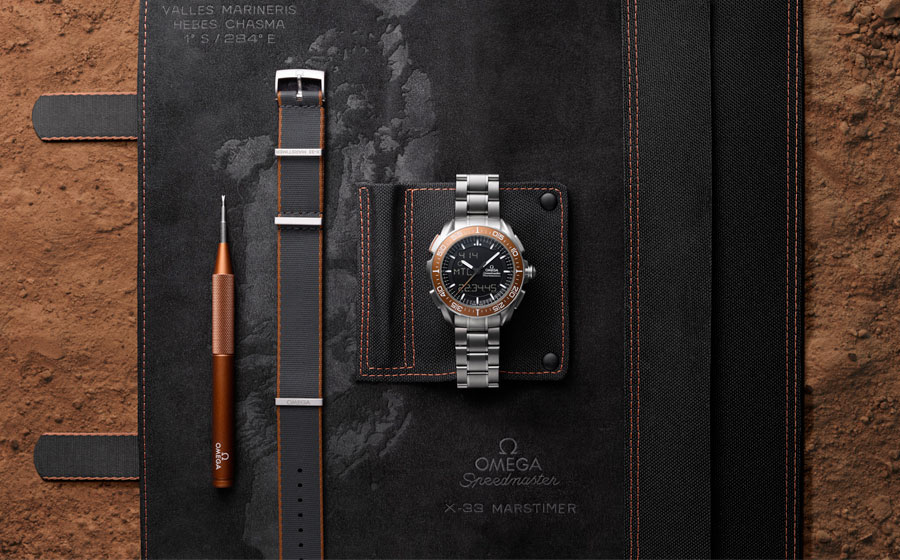
When Mars is finally within reach of your wrist!
View the technical details of the Speedmaster X-33 Marstimer – €7,600
See also:
Read also:

